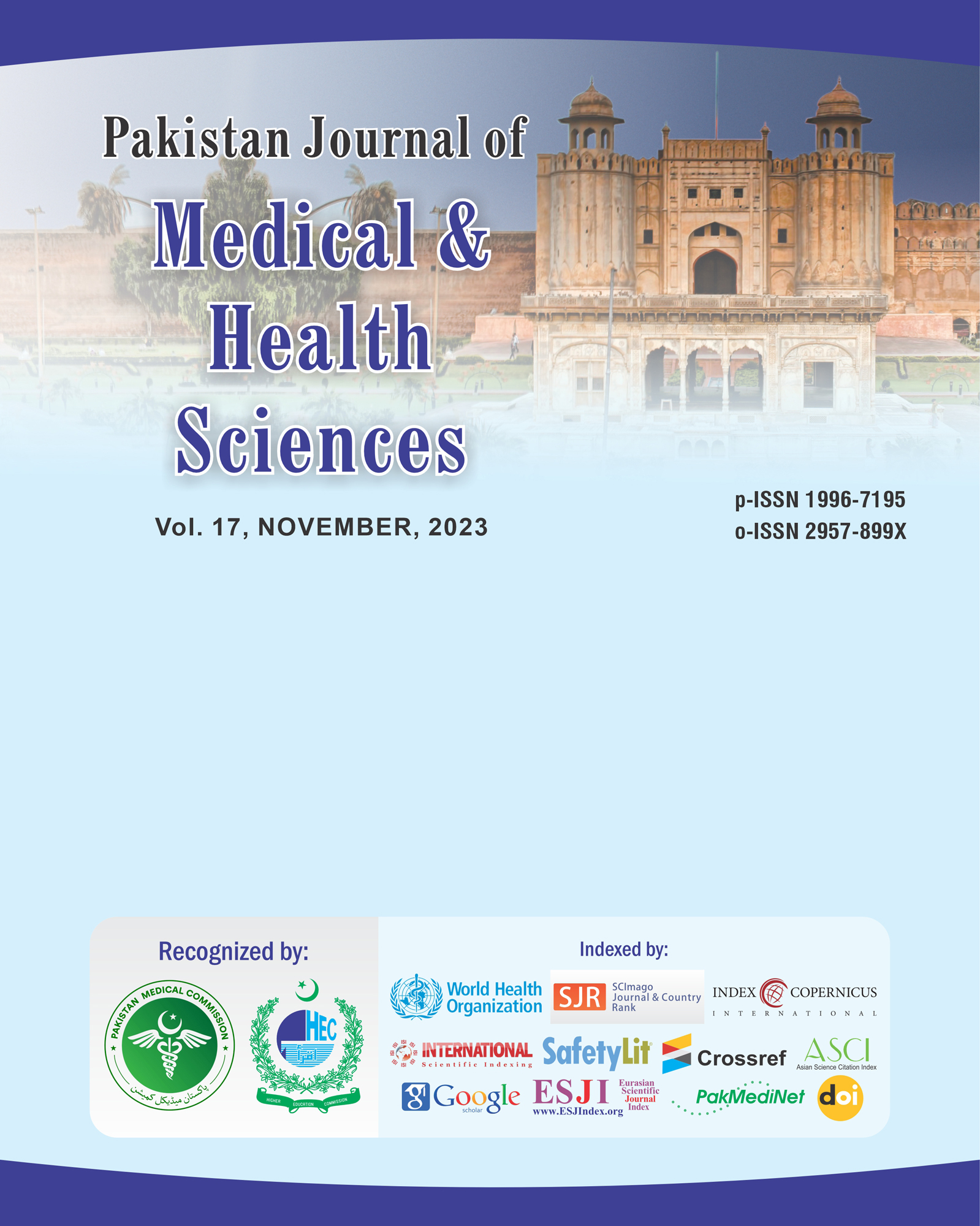Challenges and Innovations in Left Main and Bifurcation Stenting
DOI:
https://doi.org/10.53350/pjmhs20231711198Abstract
Objective: To evaluate the challenges and innovations in left main and bifurcation stenting in patients undergoing PCI at Hayatabad Medical Complex Peshawar, Pakistan. The objective was to assess the efficacy of single versus dual stenting techniques and their associated clinical outcomes.
Methodology: A total of 150 patients with left main and bifurcation lesions were included in this retrospective study. Data were collected from the hospital’s electronic medical records from January 2023 to June 2023. Patients were classified into two groups: single stenting (76.7%, n = 115) and dual stenting (23.3%, n = 35). Various parameters including comorbidities (hypertension, diabetes, hyperlipidaemia), procedural details, and clinical outcomes (myocardial infarction, stroke, restenosis, MACE, mortality) were analysed.
Results: The most common mode of presentation was NSTEMI (45.3%), followed by STEMI (22.7%). The prevalence of comorbidities included hypertension (38.7%), diabetes (52%), and hyperlipidaemia (45.3%). Complications included myocardial infarction (12%), stroke (4.7%), restenosis (8.7%), and MACE (18.7%). The dual stenting group had higher complication rates (p = 0.018 for MACE).
Conclusion: The study highlights that single stenting remains the preferred treatment method, with dual stenting reserved for complex lesions, though it carries a higher risk of complications. Tailored patient selection and procedural strategies are essential to optimize outcomes.
Keywords: Left main, bifurcation stenting, PCI, complications, dual stenting.
Downloads
How to Cite
Issue
Section
License
Copyright (c) 2023 Muhammad Ejaz, Atif Ahmed Khan, Syed Hur Hussain Hamdani, Uzair Aslam, Tayyab Mahmood, Muhammad Fayaz

This work is licensed under a Creative Commons Attribution 4.0 International License.


